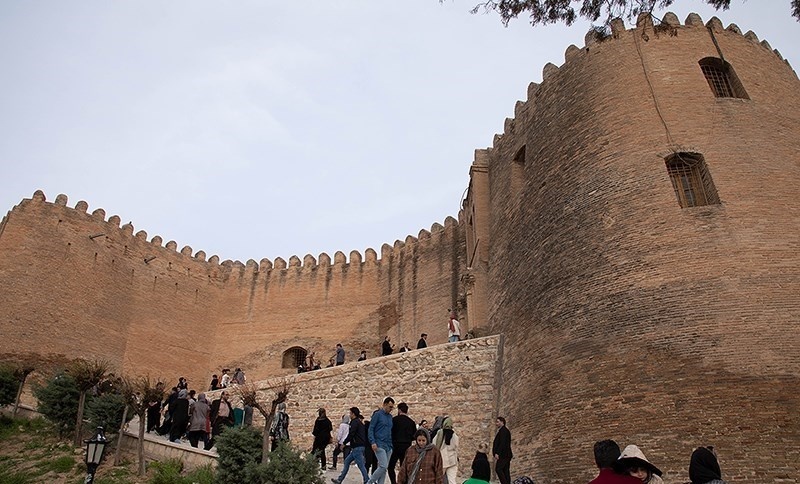SAEDNEWS: Falak-ol-Aflak Castle, Twelve Tower Castle, and Kakh-e Atabakan are the different names of Dez-e Shapur-Khwast in Iran's Khorramabad. It has been called Falak-ol-Aflak, which means the sky of all the skies, since the Qajar dynasty.

Perched atop a hill beside the river and the Golestan spring, Falak-ol-Aflak Castle dominates the skyline of Khorramabad. This iconic fortress is surrounded by a rich tapestry of historical monuments, including prehistoric caves, ancient inscriptions, a brick minaret, the Gabri Water Mill, Shapuri Bridge (Broken Bridge), and Gerdab-e Sangi (Gerdau Bardineh). Recognized for its cultural significance, the castle is officially listed on the Iranian National Heritage List.
The origins of Khorramabad trace back to the Sassanid era when Shapur-Khwast city was built nearby. After its destruction, Khorramabad emerged close to its ruins. From the 4th to 13th centuries SH, Falak-ol-Aflak served as the capital for multiple dynasties, including the Hasanwayhids, Khorshidi, Ganjur, and Buyids. Later, it functioned as the treasury of the Badr dynasty and was also used as a garrison and prison.




In the first half of the 14th century SH, it became the headquarters of Division Five and other Iranian Army forces. By 1349 SH, the castle was entrusted to the Ministry of Culture and Art. In the 1350s, it was transformed into the Anthropology Museum and Lorestan Bronze Museum. More recently, the Museum of Archaeology was added, displaying artifacts from the Achaemenid period and Kalmakareh Cave, including over 12,000 pieces of Iranian history. Reconstruction labs and other sections were also opened over time, reflecting the castle’s enduring legacy.
Standing 40 meters high and stretching 120 meters across, Falak-ol-Aflak Castle is a masterpiece of ancient architecture. The main northern gate measures three meters high and more than 10 meters wide, built from clay, red brick, stone, and mortar. Nearly a century ago, a rampart with twelve towers surrounded the castle’s northwest side, forming an irregular octagon.
The fortress features:
A 23-meter-high rampart
Eight defensive towers
Two central courtyards
Three hundred parapets
A total area of 5,300 square meters
Constructed from brick, stone, clay, gypsum mortar, and lime, the fortress is strategically designed. The northern gate leads to a hallway connecting the first courtyard (155 m², with four towers). From a corner of this courtyard, a passageway under an arch opens to the second rectangular courtyard (610 m², with four towers).
A striking feature of the castle is the 40-meter-deep well, irrigated by Golestan spring, located under an arch along this hallway. Nearby, visitors can also find an ancient bath, further showcasing the castle’s practical and architectural sophistication.
Falak-ol-Aflak Castle has been reconstructed multiple times, yet it continues to stand as a symbol of Lorestan’s rich history, a testament to ancient engineering, and a beacon for cultural exploration.





